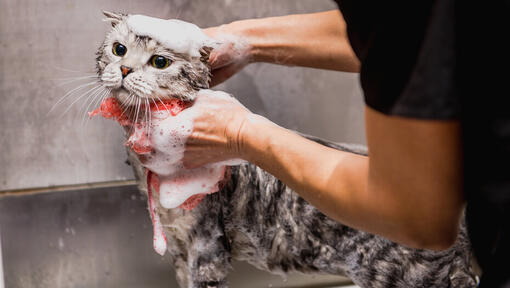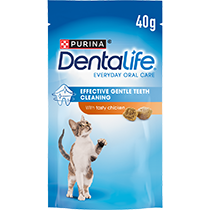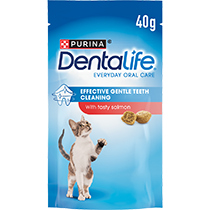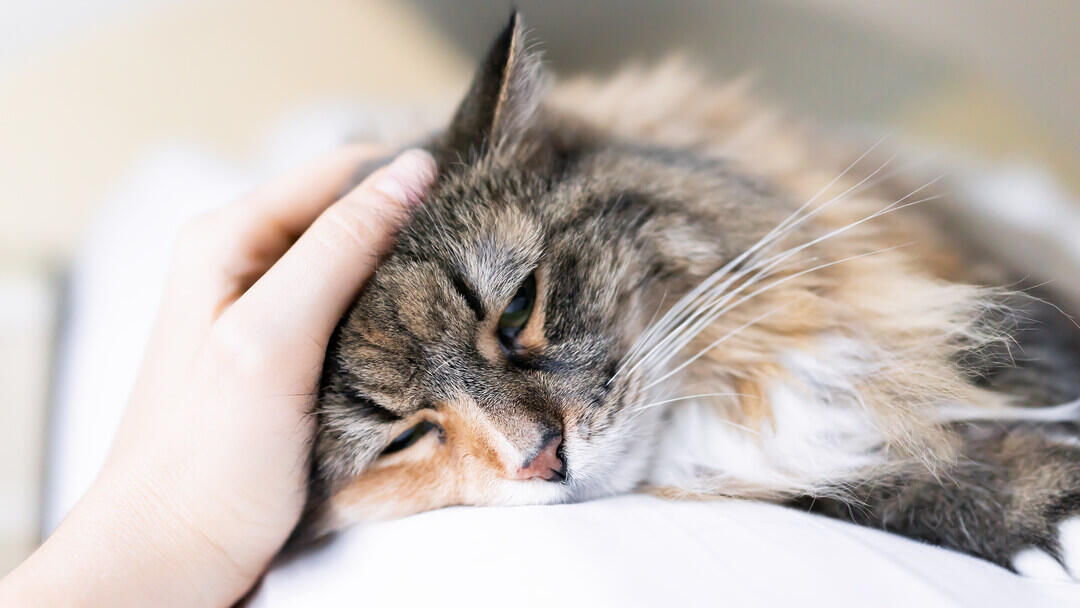Ringworm in Cats Explained: What Every Pet Owner Should Know

Despite the name, ringworm in cats has nothing to do with worms! If you suspect your cat has this fungal skin condition, it’s important that it gets treated as soon as possible to prevent spreading to other animals or even you.
Ringworm is a highly contagious fungal infection of the skin. It is more common in kittens and long-haired cats, but can affect any breed and age. It is also a zoonotic disease meaning it can spread to humans, particularly people who are immunocompromised.
Despite the name, ringworm is not actually caused by a worm at all, rather a group of fungi called dermatophytes and can be referred to by its medical name dermatophytosis.
Due to the highly contagious nature of the condition, it’s essential that ringworm treatment for cats is sought as soon as possible. If you suspect that your cat is suffering from ringworm, keep reading to find out what you should do.
What is ringworm in cats?
This common skin condition is a fungal infection which feeds on the keratin in a cat’s fur, skin and nails. It’s called ‘ringworm’ because the fungus creates circular ring-like lesions on your cats’ skin, usually also associated with hair loss. These are often found on the head, ears, along the ridge of the back and on the front legs, but they can be present anywhere on the body.
How do cats get ringworm?
Ringworm in cats is highly contagious and is most commonly caught through contact with infected cats. It can spread rapidly in multi-pet households as it gets distributed via fungal spores on skin and hair that’s been shed. Ringworm is very common in kittens under the age of one as their immune systems are still developing. It also affects long-haired cats more, because the fungus gets trapped in the longer coat and is harder to remove.
Indoor cats can get ringworm too, especially if they interact with infected cats, dogs, people, or other animals. Ringworm is spread through contact with fungal spores carried on the hairs of infected cats. The spores can stay in the environment for months or even years, for example on blankets, towels, or clothes that came into contact with it, and can be passed on to your cat from there. Wooden surfaces are also a hotbed for ringworms, especially those with little gaps where the fungi can survive, especially in the shade and humid environments (for example that wooden pole in the garden where your cat loves to have a good scratch, or the lovely old handcrafted staircase railing).
How contagious is ringworm in cats to humans?
If your cat is infected, chances are that sooner or later, you may well catch it too. It doesn’t typically affect unbroken skin; however, if you have a wound, graze, or scratch or have a weakened immune system you’re at risk.
If proper treatment is provided to your cat and your skin is unbroken, you should be safe from getting infected. If you are unlucky enough to catch it, it usually responds well to treatment so you should contact your doctor and explain the situation.
How can you tell if your cat has ringworm?
Identifying ringworm in your cat can be tricky, especially as some cats may carry the fungus without showing obvious signs. One of the earliest clues is a change in their grooming behaviour—your cat might start scratching or licking certain areas more than usual. You may also notice a rough or patchy coat, even before visible lesions appear. Pay attention to subtle shifts in skin texture or unexplained hair loss, particularly on the head, ears, or paws. If you're unsure, it's always safest to consult your vet, as they can confirm whether ringworm is the culprit and advise on next steps.
Symptoms of ringworm in cats
Sometimes ringworm can be hard to detect as symptoms may be very mild. If your cat displays symptoms, it’s likely to include of the following:
- Ring-like lesions on your cat’s skin.
- Scaly texture or dandruff in your cat’s coat.
- Circular, thickened patches of skin with hair loss.
- Sore, red and crusty patches.
- It can also affect the claws, although this is more unusual, making them rough and pitted.
It’s worth noting that signs can vary depending on your pet and the above signs can also be symptoms of other cat skin conditions. In order to guarantee an accurate diagnosis, you’ll need to take them to a vet.
Diagnosis for ringworm
To diagnose ringworm in cats your vet may conduct different tests, such as checking for fluorescence under a special UV lamp, taking a sample of your cat’s fur to analyse under a microscope, or a blood test. However, the most reliable option is to take coat brushing samples from your cat to be sent for laboratory testing. While this option is generally the most accurate it does take the longest, and you may have to wait up to two weeks for the results.
How do you treat ringworm in cats?
The most common treatment for ringworm in cats is anti-fungal medication paired with an anti-fungal shampoo. Your vet may ask you to restrict your pet to rooms that are easy to clean and prevent them from having free-roam of the whole of your house.
This is because spores can be quickly spread throughout the home. For long-haired cats, your vet may also suggest that your cat’s coat is clipped in order to tackle the fungus and make it easier to wash them with the anti-fungal shampoo.
Additionally, you’ll need to decontaminate your home to help treat ringworm. The fungal spores present in cat hair or skin will shed into your home and contaminate the environment. Pet hair will need to be removed from any furniture or carpets by vacuuming daily and hard floors will need to be mopped – you can ask your vet about pet-friendly chemical disinfectants that are safe to use. Any of your cat’s equipment such as bedding, brushes and toys which can’t be effectively cleaned and disinfected will need to be thrown away to avoid re-infection.
According to VCA Hospitals, these spores can live in your home for as long as 18 months. Therefore, this part of the treatment for ringworm is essential or you may run the risk of your cat becoming infected again. If you have other pets in the home, ask your vet whether they should also be treated. However, never use medication prescribed for one animal on another pet as this can be very dangerous, particularly if they are different species.
Now you know about ringworm in cats and the various treatment methods available, would you like to find out more general information about your cat’s health and nutrition? Cats can be exposed to a range of other infectious agents, including pesky parasites. Read our guide to lungworm in cats next.













